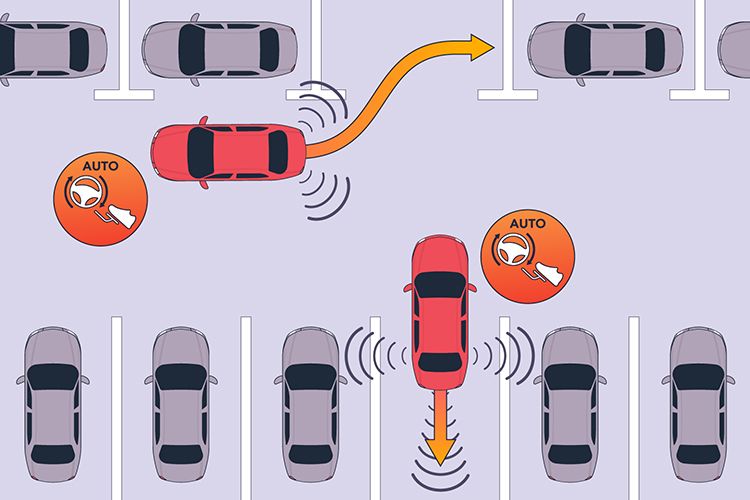How this technology works
Active parking assistance systems help you parallel park or back into a parking spot by using sensors that scan for suitable spaces that your vehicle has passed. Once the system identifies an appropriate parking spot, you’re prompted to accept the driving assistance. The system steers the vehicle, but you may need to control the gas, brakes or gears. You must always supervise this feature and safely position your vehicle and avoid obstacles.
Operation
A driver activates the system and drives slowly until a nearby parking space is detected. The system informs the driver where to stop the vehicle. The driver is asked to shift the vehicle into reverse and the system automatically parks the car. You can interrupt the system by taking hold of the steering wheel.
Active parking assistance systems often come with collision warning sensors that will warn you if the system detects an obstacle while parking.
Description
Two vehicles use sensors to help them park. One is parallel parking and the other is reversing into a parking spot. Their sensors detect the positions of parked cars.
Other names for this technology
- Parking assist
- Parking assistant
Things for drivers to keep in mind
- These systems are designed to help you park. They don't replace your attention and judgement
- Do not rely solely on the system. Always be vigilant when parking
- You should read your owner's manual to learn about your vehicle's system, including its capabilities and limitations
